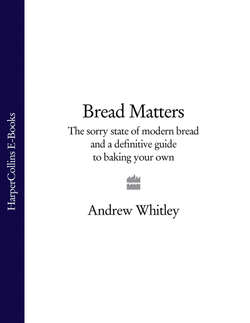Читать книгу Bread Matters: The sorry state of modern bread and a definitive guide to baking your own - Andrew Whitley - Страница 48
Baking tins
ОглавлениеA good baking tin is a lasting friend. They come in various shapes, sizes and finishes. Although ‘small’
tins are supposed to hold llb (454g) of dough and ‘large’ tins 21b (900g), they vary in size considerably - and in any case, not all types of dough expand to the same extent. I find many domestic tins rather shallow and wide and the resulting loaves can be unflattering to look at. Unless you have particular requirements such as a desired size of slice, try to find tins that are tall, narrow and deep.
I would avoid older-type non-stick finishes because they eventually break up and can leave pieces embedded in the loaf crust. There are some new non-stick finishes based on silicone rubber that are effective. Best of all is a glass-like finish, which is baked on to the tin like stove enamel. This is very durable so long as you do not dig loaves out of the tin with a knife – but you shouldn’t need to because this finish is reliably non-stick. In general, the heavier the metal, the more evenly the heat will be conducted to the loaf inside and the less chance of the tin distorting in the heat of the oven.
Try to avoid washing baking tins, especially plain metal ones, because repeated greasing and baking can build up a natural sheen, which makes it less likely that dough will stick. If you do need to clean tins, wipe them with a soft, wet cloth and no detergent.
